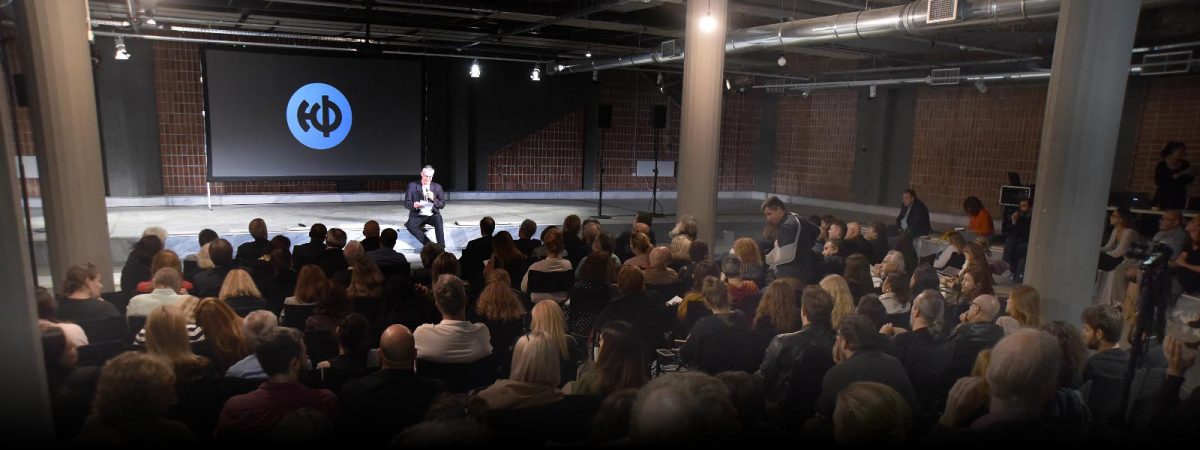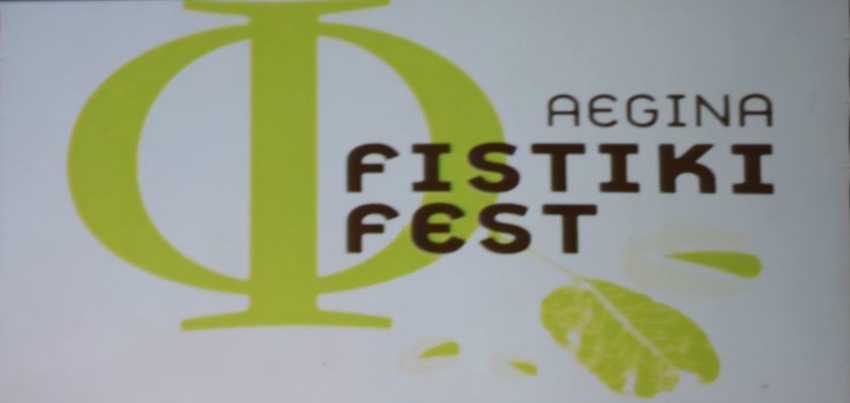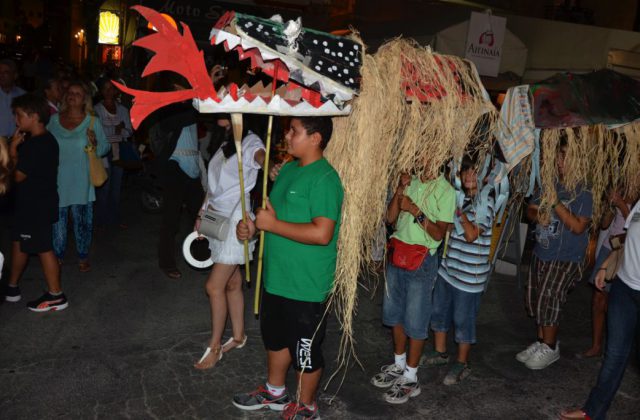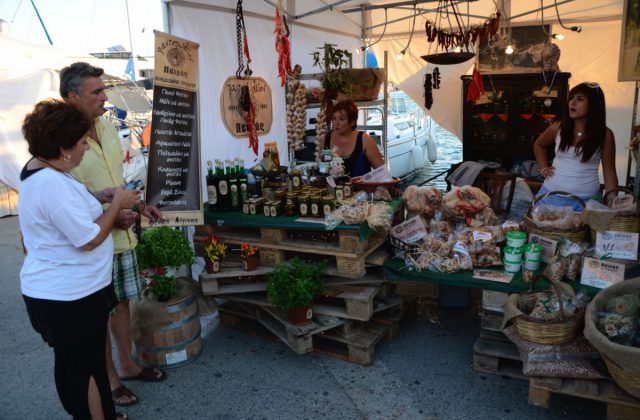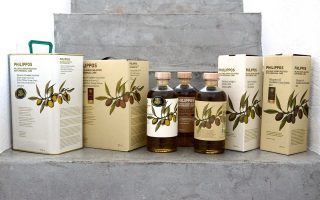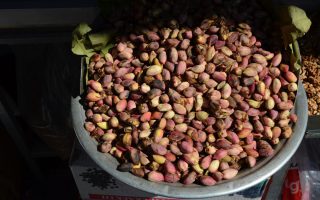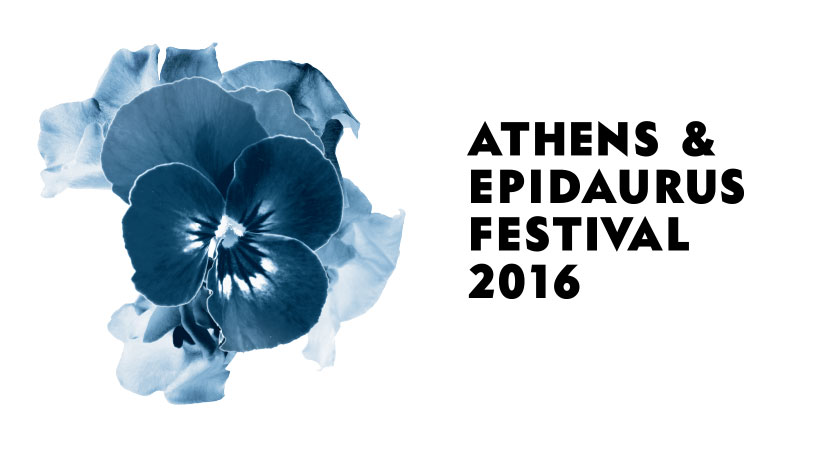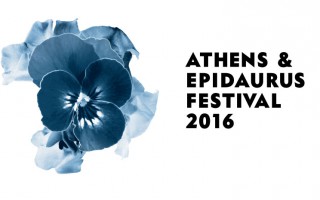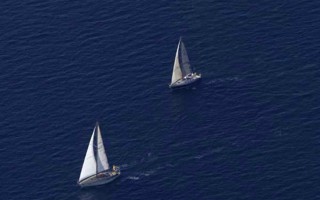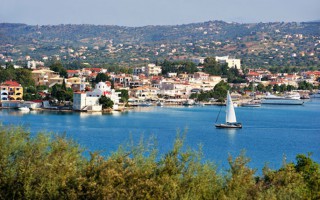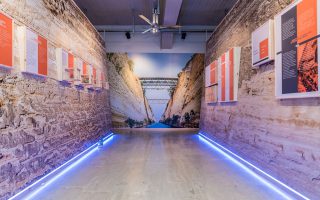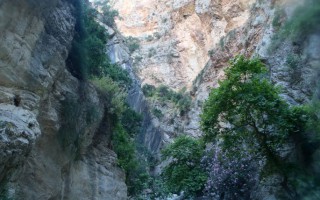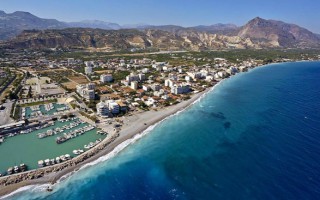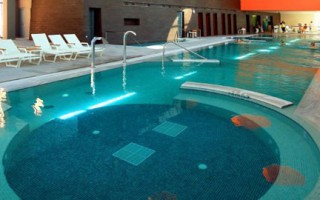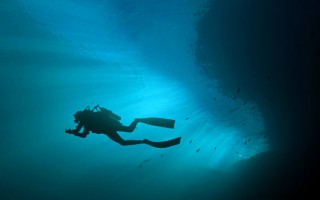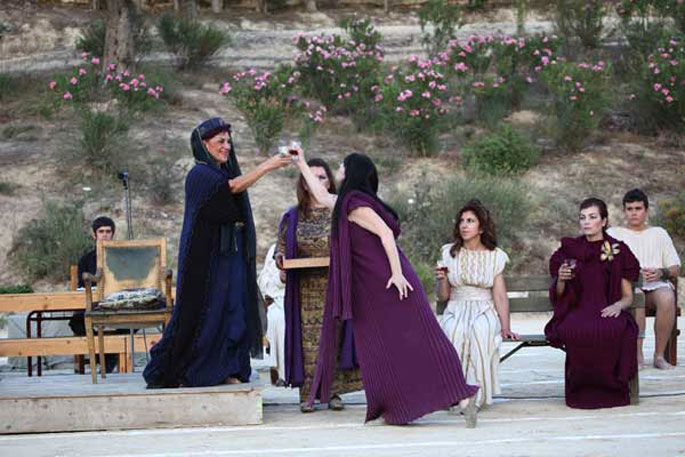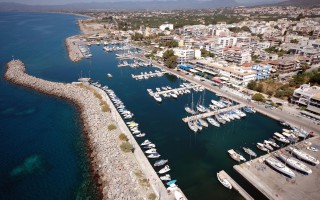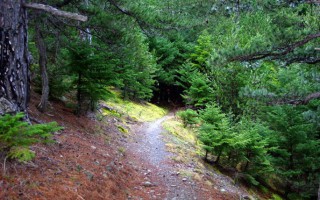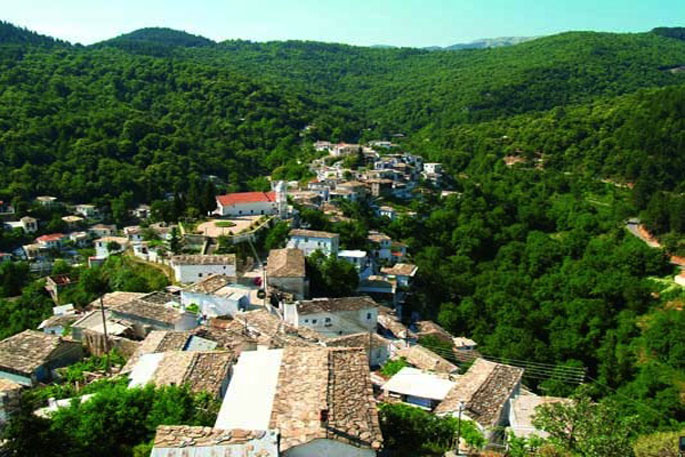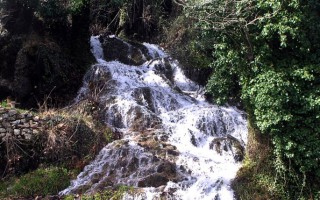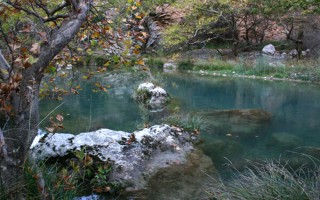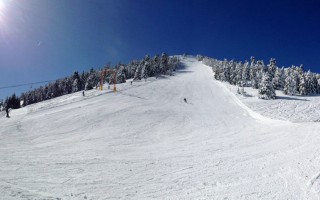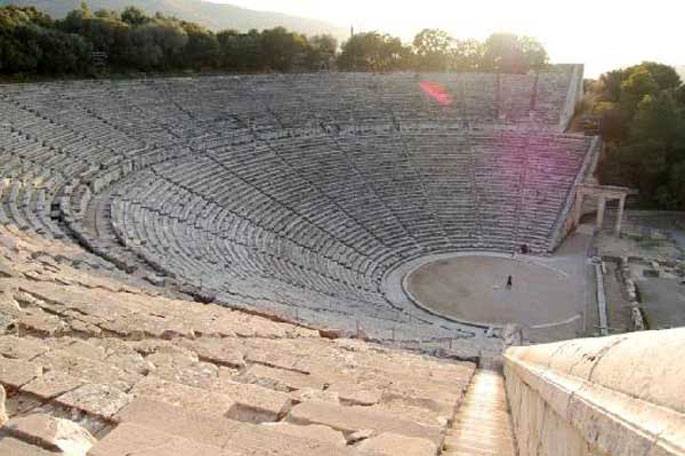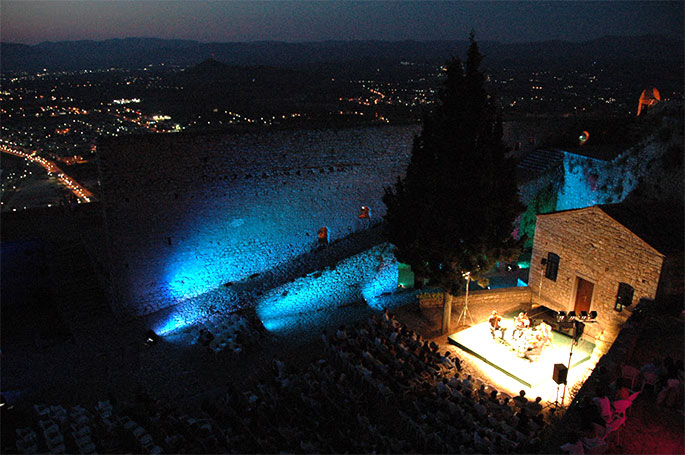The 2019 Epidaurus Festival was announced by the artistic director of Athens & Epidaurus Festival, Vangelis Theodoropoulos, on Monday 22 October, in a press conference held at the Athens Conservatoire.
ANCIENT THEATRE OF EPIDAURUS
21 & 22 June
Oedipus
Directed by Robert Wilson
Co-production: ConversAzioni – Teatro Olimpico Vicenza – Pompeii Theatrum Mundi – Teatro Stabile di Napoli
NATIONAL THEATRE OF GREECE
28 & 29 June
ORESTEIA by Aeschylus
Agamemnon
Directed by Io Voulgaraki
The Libation Bearers
Directed by Lilly Meleme
The Eumenides
Directed by Georgia Mavragani
NATIONAL THEATRE OF GREECE – CYPRUS THEATRE ORGANISATION
5 & 6 July
The Suppliants by Euripides
Directed by Stathis Livathinos
12 & 13 July
Oedipus Rex by Sophocles
Directed by Konstantinos Markoulakis
Co-production: Athinaika Theatra – Municipal and Regional Theatre of Crete
NATIONAL THEATRE OF NORTHERN GREECE
19 & 20 July
Iphigenia in Aulis by Euripides
Directed by Yannis Kalavrianos
26 & 27 July
Comédie-Française
Electra / Orestes by Euripides
Directed by Ivo Van Hove
2 & 3 Aug.
The Clouds by Aristophanes
Directed by Dimitris Karantzas
9 & 10 Aug.
MUNICIPAL AND REGIONAL THEATRE OF PATRAS
Prometheus Bound by Aeschylus
Directed by Stavros Tsakiris
LITTLE THEATRE OF ANCIENT EPIDAURUS
22 June
9th ATHENS OPEN AIR FILM FESTIVAL
Surprise screening
GREEK NATIONAL OPERA – ALTERNATIVE STAGE
28 & 29 June
Kassandra by Iannis Xenakis
Anaparastasis I: The Baritone by Jani Christou
Directed by Alexandros Efklidis
The Day Will Come… by Giorgos Koumentakis
Directed by Ektoras Lygizos
5 & 6 July
Theogony by Hesiod
Directed by Sofia Paschou
12 & 13 July
Griffón DANCE COMPANY
KAOS
Choreographed by Ioanna Portolou
19 & 20 July
Daphnis + Chloe by Longus
Un amore bucolico
Directed by Dimitris Bogdanos
26 & 27 July
Phèdre by Racine
Directed by Efi Theodorou
2 & 3 Aug.
Danaids by Andreas Kalvos
Directed by Natasa Triantafylli
Read more
διαβάστε περισσότεραUnder the imaginative title “Hold on my beloved pistachio tree” a daily workshop was held in 2008 on the initiative of the residents of Aegina. Serving as a stage for presenting inter alia the valuable experience of Bronte, a pistachio-producing town in Sicily, this event gave rise to the establishment of the famous Fistiki Fest (fistiki stands for pistachio in Greek).
Since then, the Fistiki Fest, embraced wholeheartedly by all Aegina residents, takes place every year in September and has become synonymous of Aegina’s major modern fêtes.
Μore at Greek Gastronomy Guide…
Source: www.greekgastronomyguide.gr
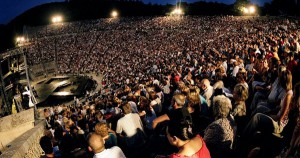 What is the Athens Festival? A great celebration that has lasted 56 summers, and that has hosted some of the leading lights of theatre, music and dance. From Mitropoulos and Callas to Rostropovich, Pavarotti, Leonidas Kavakos and Dimitris Sgouros. From Theodorakis and Hadjidakis to Savvopoulos, Protopsalti, Dalaras and Marinella. From Rondiris and Koun to Streller, Peter Hall, Noh theatre, Bunraku puppet theatre, and the Peking Opera. From Balanchine to Pina Bausch, and from Nureyev and Fonteyn to Martha Graham and Alicia Alonso.
What is the Athens Festival? A great celebration that has lasted 56 summers, and that has hosted some of the leading lights of theatre, music and dance. From Mitropoulos and Callas to Rostropovich, Pavarotti, Leonidas Kavakos and Dimitris Sgouros. From Theodorakis and Hadjidakis to Savvopoulos, Protopsalti, Dalaras and Marinella. From Rondiris and Koun to Streller, Peter Hall, Noh theatre, Bunraku puppet theatre, and the Peking Opera. From Balanchine to Pina Bausch, and from Nureyev and Fonteyn to Martha Graham and Alicia Alonso.
 Above all, however, it is a venture with an eventful past often clouded by events in Greece’s recent history. A venture that, over the last two years, has taken on a youthful vitality, and openness. But how did we come to this point?
Above all, however, it is a venture with an eventful past often clouded by events in Greece’s recent history. A venture that, over the last two years, has taken on a youthful vitality, and openness. But how did we come to this point?
Until 2005, Hellenic Festival events were staged at the following venues: the Odeon of Herodes Atticus, the two ancient theatres at Epidaurus (at the Sanctuary of Asklepios, and at the ancient city), and the Lycabettus Theatre. In the summer of 2006, the company began a programme of expansion regarding the venues at which its performances are staged: property granted by the National Bank of Greece allowed for the creation of a new theatre through the renovation of Building D at the former Tsaosoglou Factory at 260 Pireos Street, while other venues around the city were used for the first time, such as Irini Pappas’ “Scholeion”, the Kotopouli Theatre, the Benaki Museum, the Faliro Indoor Sports Hall, the Porta Theatre, and others. A new theatre, co-funded by the Ministry of Culture and the Hellenic Festival, was created in 2007 through the renovation of Building H at the Peiraios 260 complex.
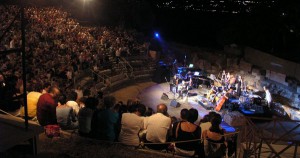 In addition to the creation of new venues for the staging of its performances, the company aims to broaden the audiences that attend its events, to highlight and promote the work of young artists, and to present contemporary trends in dance, music and theatre through the invitation of, and collaboration with interesting artists and performance companies. Efforts are being made to fall in line with the major European festivals of this kind.
In addition to the creation of new venues for the staging of its performances, the company aims to broaden the audiences that attend its events, to highlight and promote the work of young artists, and to present contemporary trends in dance, music and theatre through the invitation of, and collaboration with interesting artists and performance companies. Efforts are being made to fall in line with the major European festivals of this kind.
Programme: click here
Tickets: click here
Venues
Website: greekfestival.gr
The ancient Greeks celebrated festivals at Nemea that were part of the cycle of games at Delphi, Isthmia, and (best known today) Olympia. At each one of these four sites in rotation, for a brief period each year, wars and hostilities were suspended by a sacred truce, and all Greeks – Spartans and Athenians, Corinthians and Argives, Macedonians, and Cretans – gathered in recognition of their common humanity. The society for the Revival for the Nemean Games (which now has more than 1900 members from around the world) was founded in the belief that there is today scope and perhaps even the need for the average person – regardless of ethnicity, language, religion, gender, age, or athletic ability – to participate in an international athletic festival.
And so it happened in 1996 and 2000 and 2004 and 2008. More than 2500 people from 45 different countries, ranging in age from 6 to 96, have added their footprints to those of ages long gone. The games include running in the Stadium and a long distance run called “Footsteps of Herakles”. No records are kept, no medals are awarded. Families with picnics on the slopes of the stadium are as much a part of the festival as the runners. Races are organized by gender and age, and are interspersed with music and dances.
The Society for the Revival of the Nemean Games was founded on December 30, 1994, but the idea of a revival began much, much earlier. After continuous efforts there came the completion of the excavations and the publication of the stadium, and its landscaping. On July 6, 1994, Miller turned the stadium park over to the State in the persona of the then Minister of Culture, Thanos Mikroutsikos. It was wonderful to see the ancient stadium come back to life after so many centuries in front of 1500 spectators. The Nemean Games have 2 basic principles the Games should be as authentic, as true to historic precedent, as possible; and they should be for the participation of everyone to become an ancient Greek athlete if only for ten minutes.
In antiquity athletes assembled at the altar in front of the Temple of Zeus where they performed sacrifices and swore their oath. All the athletes assemble at the ancient locker room (apodyterion) where they will be assigned to their final grouping of twelve for each race – each group of similar age and the same gender.
 Once inside the tent, the athlete will small clay jars (aryballoi) which contain olive oil as they did in antiquity — for the athletes to rub over their bodies.The modern participant at the Nemean is not required to use the oil, nor to compete in the nude – although that would be authentic. Rather, when each competitor enters the apodyterion tent, he or she is given a large plastic box, a chiton (tunic), and a zoni (belt). A doulos (slave – in a yellow chiton) will take the box for safe-keeping. The chiton slips over the head, and the zoni tightened around the waist will allow the length of the chiton to be adjusted to suit.
Once inside the tent, the athlete will small clay jars (aryballoi) which contain olive oil as they did in antiquity — for the athletes to rub over their bodies.The modern participant at the Nemean is not required to use the oil, nor to compete in the nude – although that would be authentic. Rather, when each competitor enters the apodyterion tent, he or she is given a large plastic box, a chiton (tunic), and a zoni (belt). A doulos (slave – in a yellow chiton) will take the box for safe-keeping. The chiton slips over the head, and the zoni tightened around the waist will allow the length of the chiton to be adjusted to suit.
A Hellanodikes (judge) enters the tent when it is time for the next group of runners. He will be dressed in a black himation (long robe) as were the judges at the ancient Nemean Games in memory of the death of Opheltes, and he will be holding a switch of olive with which he will flog anyone who commits a foul or does not obey his orders — as was done in ancient Greece. The Hellanodikes summons the next group to leave the apodyterion and enter the passageway between it and the krypte esodos (hidden entrance tunnel). There he administers the oath of the Nemean Games in Greek: “Do you swear to abide by the rules of the Nemean Games and to do nothing that would bring shame to you, your family, or the spirit of the ancient Games?”
Each participant is expected to respond: “I swear.” And the judge will respond, as he did in antiquity: “Now go forward into the stadium, and be worthy of victory.”Now the participant passes through the 120′ long ancient tunnel (constructed about 2,320 years ago) being careful not to touch the walls, for the graffiti scratched then by ancient athletes can be damaged. At the far end of the tunnel, the participants wait for a blast from the salpinktes (trumpeter, dressed in a maroon chlamys) that signals the crowd to be quiet. Next the keryx (herald, in a blue himation) calls out the name of each athlete.
When the keryx calls his or her name, the participant runs out of the tunnel to the track where another hellanodikes asks each participant to draw a kleros (marble lot) from a bronze helmet. This is the race called the stadion although the ancient stadion race was actually twice as long, but the Nemean stadium track is not preserved to the full ancient length.
With the lanes assigned, each modern athlete positions him-/herself with the toes of one foot in the front groove and the toes of the other foot in the back groove. It does not matter which foot is forward and which behind, but BOTH FEET MUST BE IN THE GROOVES. If both feet are not in the grooves the switch of the Hellanodikes will be felt.
When all the runners have taken their positions, and the aphetes (starter, in a white himation) has prepared the hysplex to his satisfaction, the salpinktes will blow his trumpet, and the aphetes will shout out three ancient words which are the rough equivalent of our English “ready! set! GO!”
“poda para poda” (foot by foot)
“ettime” (ready)
“ápite” (GO)
As he shouts ÁPITE the aphetes pulls the trip-cords which release the hysplex and the torsion-loaded post hurls the barrier-cords to the ground in front of the runners.
The Hellanodikai at the finish line tie a ribbon around the head of the victor, and give him/her a palm branch. These were the immediate tokens of victory that were awarded in antiquity. The salpinktes will blow his trumpet, and the keryx will announce the name of the victor. (The winner should wear the ribbon and keep the palm branch close at hand for the rest of the Games.)
The first of the twelve Labors of Herakles was to slay the Nemean Lion, a beast whose skin could not be penetrated. Herakles was forced to wrestle the Lion and strangle him. Ancient authors tell that Herakles had his base of operations against the Nemean Lion at Kleonai. The modern race which follows the road from Kleonai to Nemea — as did Herakles — is therefore called “The Footsteps of Herakles”. The course of the 7.5 km. race is marked clearly by a Hellanodikes and a doulos at each cross road. It begins from the Temple of Herakles and follows a country road through fields of grain, olive groves, and vineyards. The gradual uphill course becomes much steeper as the road enters and passes through the modern village of Kleonai with Akrokorinthos in the background.
After the last of the Footsteps of Herakles runners crosses the finish line, the participants return to the apodyterion to clean up and dress.
Late that afternoon come the closing ceremonies. The winners, with their ribbons and palm branches, assemble in the apodyterion. All the other participants, clad in their T-shirts, assemble at the north end of the track in front of the Altar of Zeus and then file past the Hellanodikaion to receive a “Nemea” pin. This pin is not only the official badge of participation at the Games, but is also the “ticket” to the banquet that will follow for those who ran in the Nemean Games. Meanwhile the winners will be ordered in accordance with the sequence of races in the krypte esodos. When the keryx calls each name, he or she will come forward to the Hellanodikaion (judges’ stand) to receive the official ancient victory prize — the crown of wild celery.
With all the participants on the ancient track, the final ceremonies of the modern Nemean Games end with a prayer to Nemean Earth and the extinguishing of the flame on the Altar.
In antiquity, the final item on the program of the Olympic games was a victory banquet in the prytaneion (town hall) next to the eternal flame of the goddess Hestia. The equivalent of this at the revived Nemean Games is a banquet in the square by the Town Hall of Ancient Nemea where the office of the Society for the Revival of the Nemean Games is located. Those who have run, and their friends and families, will be hosted by the Society and by the citizens of Ancient Nemea. The evening frequently ends with dancing in the streets.
All the participants ran barefoot and in ancient tunics which they put on in the ancient locker room. Your real medal; feet sore from contact with the same earth where ancient feet ran more than 2,300 years ago – and the knowledge that they had been in direct physical contact with an ancient idea, an ancient spirit, that still lives at the earth of Nemea.
Source: www.mythicalpeloponnese.gr
For the town Nemea, the beginning of fall is a celebration! It is the grape harvest! Every year at the beginning of September, a three-day celebration of Nemea’s wine producers, called “Great Days of Nemea” is organized. This event is organized by the Municipality of Nemea and the Nemea Union of Wine Producers and Viticulturists, and presents the wine wealth of the area and “Agiorgitiko”, one of the most famous wine assortments worldwide. For wine lovers, this is a great opportunity to celebrate the new harvest with the producers.
The events of the greatest vineyard of the Balkan Peninsula take place in an area that provides a significant archaeological tradition and it is defined by the wine culture. Here is the land of the wine of Fliasion, which was very popular in the ancient times because of its widespread consumption in the Nemean Games. According to tradition, on the low hill southern of the today’s plain of Nemea, near to the springs of Asopos River, king Arash built a city. This city was located in a blessed location, with the river watering the fertile plain, named Fliasia after the son of God Dionysus, Flias, who reigned here according to mythology. It is believed that it was here where they cultivated the first grapevine and they produced the first wine, the famous wine of Fliasion, rumored to accompany king Agamemnon’s rich feasts in the palace of Mycenae. The old name of Nemea was Ai Giorgis, and after that was named the grape and wine assortment, “Agiorgitiko”, admirable successor of the legendary ancient wine assortment.
The wineries that participate in the events stay open during the festival offering an amazing opportunity for everyone to familiarize themselves with the wine and its production process.
The events are centered around the promotion of the vineyard to visitors, to boost the environmental culture in order to change the way we handle and protect the product and to teach us new environment-friendly methods of cultivation and wine making.
The festival lasts 3 days and includes visits to wineries, wine tasting seminars, tours to vineyards and a series of cultural performances, concerts, exhibitions, workshops, movie nights etc.
Information:
0030 27463 60132 & 0030 27463 60118 (Municipality of Nemea)
Source: www.mythicalpeloponnese.gr
In 2012 took place the 18th Kalamata International Dance Festival, which is organized every summer by the International Dance Centre. The Festival is a permanent, recognised cultural institution, both in Greece and abroad, and it is one of the Prefecture of Messinia’s most important events.
The Festival has contributed to making Kalamata a point of a attraction for thousands of visitors each year, who have associated the name “Kalamata” with modern dance. Another important fact is that it helps promote Greek choreographers, by making their name known also outside of Greece.
Source: www.mythicalpeloponnese.gr
Every October the village of Kastanitsa, Arcadia, organizes the famous Chestnut Festival, which aims to bring out this product, with its great nutritional value and multiple commercial capabilities.The custom of celebrating the chestnut began in 1983 and has been taking place every year since then. The celebrations include, of course, the preparation and tasting of dishes based on the chestnut, and also traditional dancing, various exhibitions and informative talks regarding the chestnut, as well as a variety of topics of environmental nature. Those who are in the area in October must definitely make a stopover in Kastanitsa to experience the unique Chestnut Festival.
The Naturalist Association of the Natives of Kastanitsa, in collaboration with the Management Body of Mount Parnon and Moustos Wetland, organize the famous Chestnut Festival, with the aim to highlight the importance of this beloved crop in the agricultural and financial development of the wider area and also to promote this beautiful Tsakonian village, inviting more people to visit it.
The Chestnut Festival was organized for the first time in 1983 by the Kastanitsa Association and has been taking place every year since then. The visitors have the opportunity to taste traditional, mainly chestnut-based dishes and desserts – prepared both by professional chefs and the village’s women – accompanied by drinks and traditional music. There are also cooking and confectionery contests, again based on the chestnut, and also traditional dancing and various exhibitions, such as painting and photography.
The Festival is also a great opportunity for the visitors to get to know mount Parnon and its ecosystem better, through informative talks and excursions; they will also get to know the wider area of Tsakonia, with its special customs. It has been estimated that during the Chestnut Festival thousands of visitors flock to the area, providing a significant financial boost.
Source: www.mythicalpeloponnese.gr
The Festival of Tsakonia took place for the first time during the summer of 2011 in Leonidi, in the prefecture of Arcadia, under the auspices of the municipality of South Kynouria. Also known as “Melijazz”, it combines the unique culinary traditions of Tsakonia with musical sounds from around the Mediterranean. Aubergine is the star of the local cuisine and is used in various recipes, creating unprecedented taste sensations. Jazz, ethnic and Latin music complement the festive ambiance in the traditional, picturesque settlement of Leonidi, together with a broad Greek music repertoire. Mediterranean flavours, singing and dancing are all combined in this unique festival, which is not to be missed!
Source: www.mythicalpeloponnese.gr
Every year since 1995, the “Epidaurus Festival” is organized, offering the visitor the opportunity to watch various performances at the imposing ancient theater of Epidaurus. So if you love ancient drama, you must visit this picturesque theater especially on a cool Friday or Saturday night under the moonlight. While it gets dark, you will be able to enjoy the amazing lyrics of the ancient dramatists played by the best and most talented actors.
Source: www.mythicalpeloponnese.gr
During the beautiful, magical nights in end June every little romantic corner of Nafplion is filled with beautiful sounds and melodies coming from the “Naflpion Festival”. Come and join us in this unforgettable musical journey.
Source: www.mythicalpeloponnese.gr
- 1
- 2

